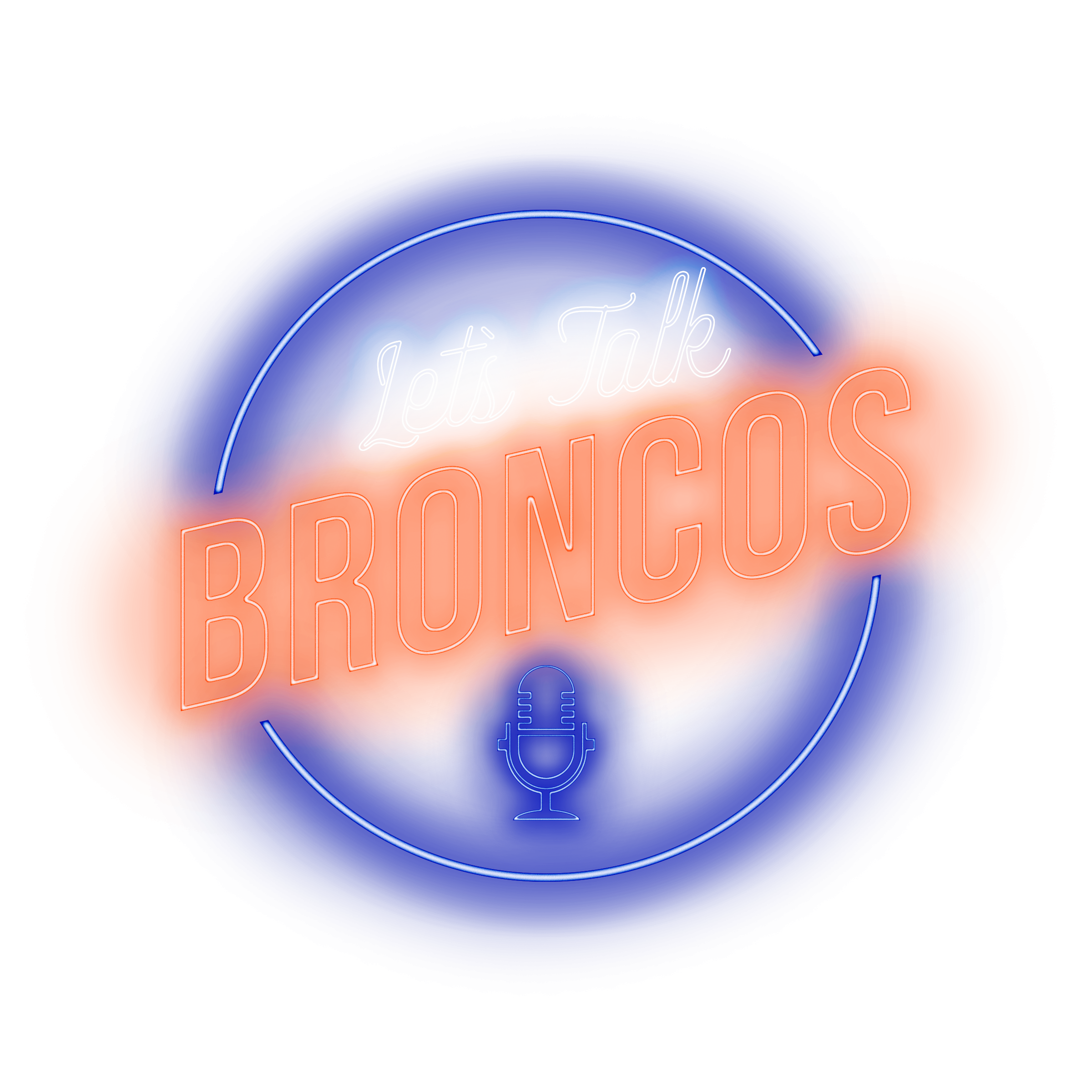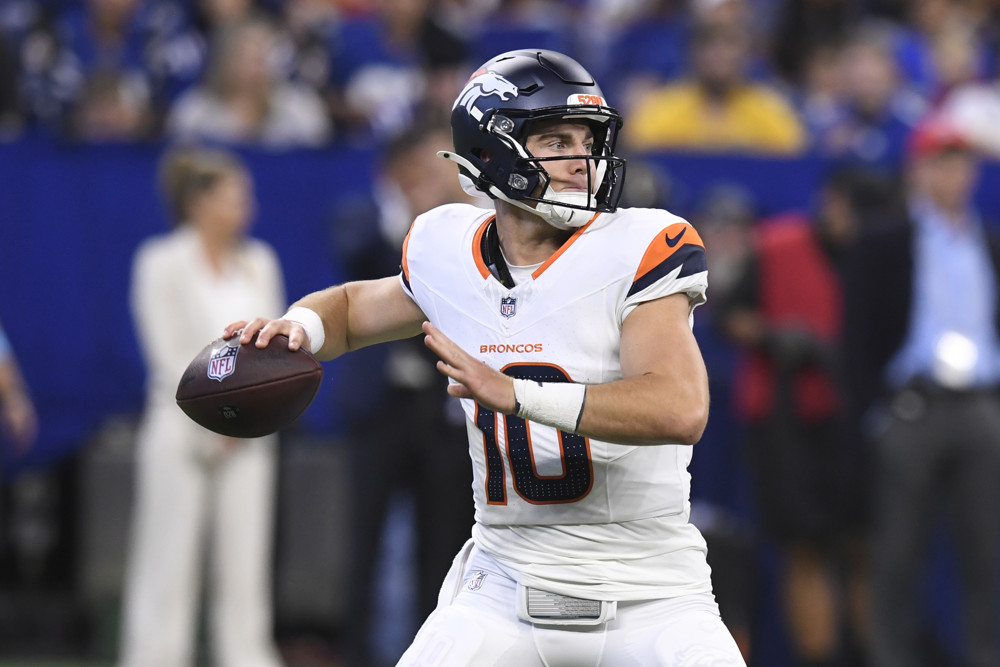
Every year, every Denver Broncos fan and every fan of every other team around the NFL hopes their team will be lucky enough to take home the Lombardi Trophy, but that ultimate form of elation is the only joy sports offer.
Most of the time, that sense of joy comes down to whether or not your team fulfilled or surpassed your expectations.
From 2016 to 2023, the Broncos regularly failed to meet expectations. The team religiously ‘reloaded’ the roster, plugged in a low-wattage and/or diminished quarterback option, and prayed for the the final wild card spot, only to be greeted by a sub-.500 season and disappointment.
Finally, in 2024, the Broncos stampeded past the fanbase’s expectations, winning 10 regular season games and reaching the playoffs.
This past season was a tremendous ‘Stock Up’ for the entire Denver Broncos organization and Broncos Country, but which players and figures stood out the most? Plus, which warts remained present despite the joyous season? Let’s look!
Note: I enjoy this series, but now it’s time to pivot into free agency and draft content. The Broncos stock report will return following the free agency period or the NFL Draft.
DENVER BRONCOS STOCK UP
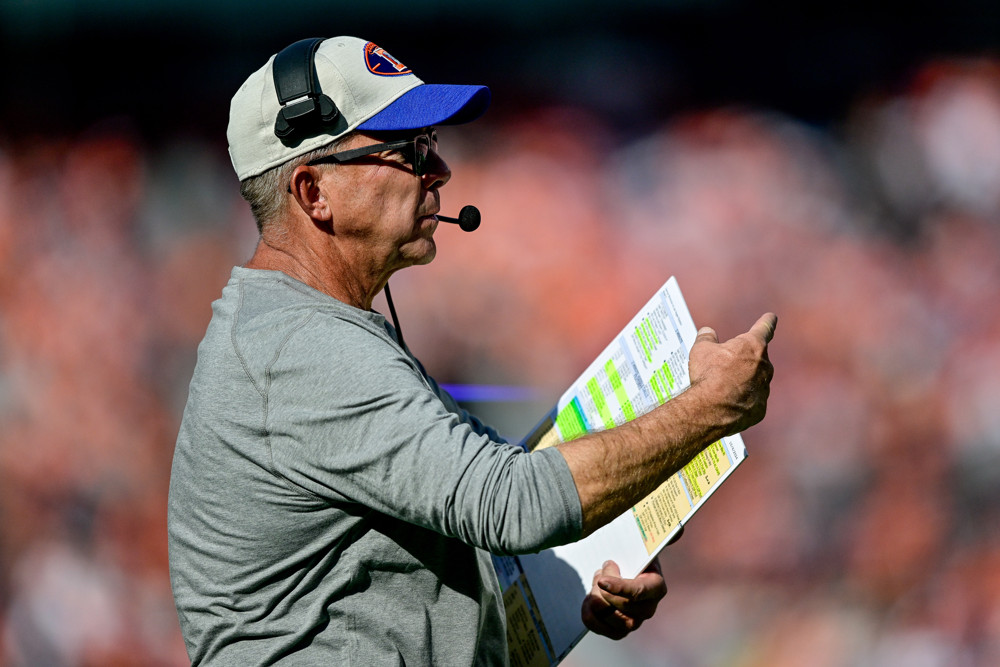
The Entire Denver Broncos Coaching Staff
It’s easy to forget now, but there were very real doubts about the Denver Broncos coaching staff entering this season.
Pundits, both nationally and locally, questioned whether or not Sean Payton was over the hill after the messy divorce with Russell Wilson. Vance Joseph had done a lot to repair his image down the stretch of 2024, but many still questioned whether or not the turnaround was really the product of turnover luck, as opposed to high-end coaching.
Payton and Joseph obliterated those narratives this season.
First, Payton proved he was capable of scouting, drafting, and developing a rookie quarterback — something that hadn’t been on his head coaching resume until then.
Sean Payton knew he found his QB after just the 16th throw during Bo Nix's workout. But, he knew other teams really wanted Nix.
— Chase Daniel (@ChaseDaniel) August 21, 2024
He wanted to avoid a repeat of the scenario where Chiefs jumped the Saints, who had intended to draft Patrick Mahomes in 2017!pic.twitter.com/oTjlEBhJPm
He also proved the modernity of his offense and his ability to adapt to the strengths of his quarterback and the offensive talent provided, as he leaned harder into the boot/RPO concepts that allowed Bo Nix to regularly lean on one of his better strengths — his legs and ability to throw on the move (though we did see Nix lean into that mobility a little too much at points this season). His ability to lead one of the NFL’s youngest rosters to the postseason also demonstrated his grasp on the modern game.
On the other side of the ball, tremendous player development efforts from Vance Joseph not only prevented the defense from falling off but catapulted it into the stratosphere of the league’s elite units. You could easily argue that Pat Surtain II, Riley Moss, Ja’Quan McMillian, Brandon Jones, Cody Barton, Justin Strnad, Jonathon Cooper, Nik Bonitto, Zach Allen, Malcolm Roach, and D.J. Jones all had the best seasons of their respective careers, and that’s a testament to coaching.
Vance Joseph is a psycho for these calls late in the game vs Rodgers…
— Ben Fennell (@BenFennell_NFL) September 30, 2024
The Cover 0 pass off was awesome between Jones/McMillian! Then a funky zone pressure dropping out the mugging LB and DE – sending backside S free. pic.twitter.com/FRcvgMGFp9
Another testament to coaching is the fact that Ben Johnson and the Detroit Lions hammered down the Broncos’ door to find their new offensive coordinators, while Denver’s assistant special teams coordinator, Chris Banjo, takes a bevy of special teams coordinator interviews.
Even if we zoom in on singular positions, the successes in developing the roster are apparent. Davis Webb has done a great job with Bo Nix, Jim Leonhard took Surtain’s play to new heights and improved the secondary play overall, and Zach Strief rewarded the Broncos’ faith in him by creating an elite pass-protecting offensive line despite swapping out Lloyd Cushenberry III for Luke Wattenberg.
From a more macro perspective, the coaching staff has already succeeded in their goals of turning the franchise around, returning it to respectability, and finding the QB of the future. Now they just need to take the next step.
George Paton
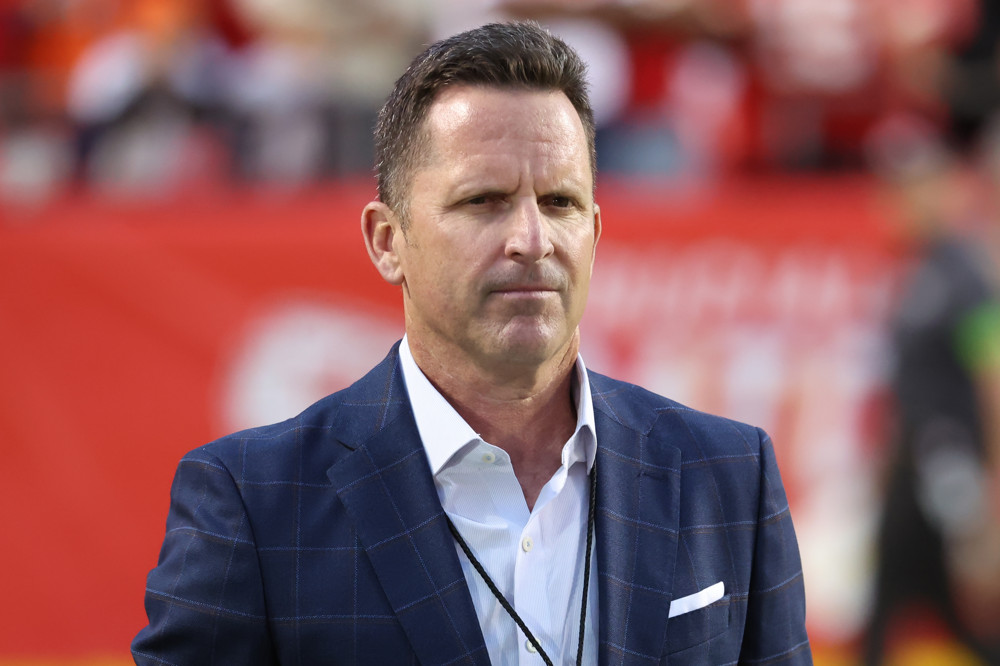
After the Nathaniel Hackett hire and Russell Wilson trade blew up in his face, it seemed like the installation of football czar Sean Payton would be the final nail in the coffin for George Paton’s tenure with the Denver Broncos.
Instead, it’s proven to be his saving grace, as was proven during the Broncos’ end-of-year press conference, which highlighted the duo’s strong working relationship and their respective abilities to boost the other.
Like every human in every line of work, Paton has his strengths and weaknesses, and the Payton hire removed all the weaknesses from his plate and allowed him to focus on his areas of strength instead, and the Broncos’ roster has benefitted greatly.
It’s clear from his pre-Payton years in Denver that Paton’s coaching staff decisions and veteran contracts were weaker elements of his toolbelt.
He was hired and chose to bring back Vic Fangio for an extra season so his ‘clock’ wouldn’t start running yet, which is a smart decision for Paton’s short-term job security, but a very poor decision for the Broncos’ long-term success. Then, he sat down with Nathaniel Hackett for several hours and walked away believing he should be the Denver Broncos head coach, which is a baffling conclusion to arrive at, considering what the general public has seen from the lovable oddball with far less exposure.
Some will counter and say he only hired Hackett because he was told it would result in the Broncos landing Aaron Rodgers. First, that is a terrible process and an even less forgivable mistake than simply hiring Hackett because you thought he was the man for the job and absolutely crushed the interview. Second, with the blessing of hindsight, it seems like trading for Rodgers might have been even more disastrous than trading for Russell Wilson so that being ‘Plan A’ doesn’t buy Paton much forgiveness.
Paton’s major signings — the aforementioned Wilson and Randy Gregory — also aged very poorly.
All that said (which does seem worth acknowledging with the revisionist history currently going on), Paton has some very real strengths too. He’s a talented drafter, and his greatest skill might be his ability to collaborate with the coaching staff to find the players they need.
When Paton allowed Hackett’s staff and Russell Wilson to dictate the draft, the results weren’t pretty, but when he’s gotten to work with Vic Fangio or Sean Payton, the classes have had marvelous success. The Denver Broncos have built themselves a solid offensive foundation, upgraded their defense, and found their quarterback of the future in the past two classes, all with just one top-50 pick.
Plus, the injection of Saints-style thinking into the front office has made the Broncos’ contract structuring much smarter and much safer. Instead of getting burned by pricey stars dotted with red flags, like Wilson or Gregory, the Broncos have made shrewd signings like Brandon Jones, Malcolm Roach, and even Cody Barton, who became key contributors despite their relatively small deals. Denver has also done a great job extending their homegrown talent, somehow signing Pat Surtain II, Quinn Meinerz, Jonathon Cooper, and Garett Bolles to long-term, team-friendly deals.
Even when the Broncos have gotten burned, as we saw with Josh Reynolds, the damage ends up being negligible. Reynolds was one of Denver’s biggest offseason additions, a projected starter, and after one injury and an odd off-field situation, the Broncos cut him for just $2.6 million in dead cap, which is now already paid off and will no longer hamper the team.
This perfect marriage between George Paton’s scouting and Sean Payton’s vision and player development has resulted in the Denver Broncos having more All-Pros this season than they’ve had at any other point in the 21st century.
More than those 13-3 Jake Plummer teams, more than the all-time great 2013 Denver Broncos offense, more than the Super-Bowl-winning 2015 Denver Broncos and their legendary defense, and Paton did it all despite torching most of his quality draft capital, being drowned in dead cap, and making one of the worst head coach hires in the history of American professional sports.
Pat Surtain II
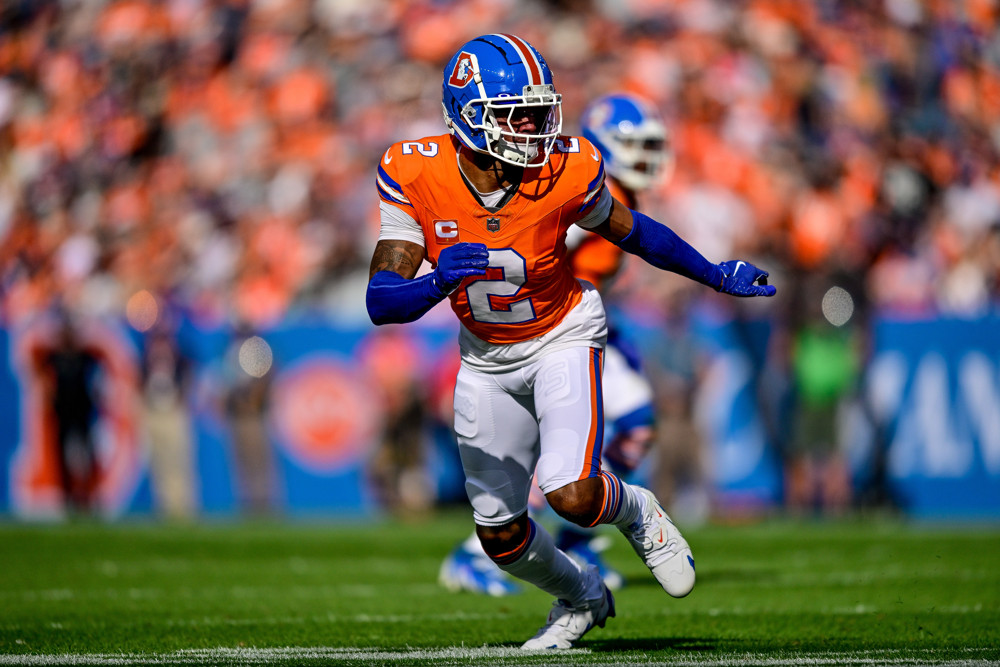
Incredibly, Pat Surtain II is one of the top ‘Stock Up’ players for the Denver Broncos this season, despite entering the season as unquestionably the best member of the roster.
Surtain orchestrated the of season at cornerback that we rarely see — winning Defensive Player of the Year at cornerback. Since Deion Sanders did it in 1994 — 30 seasons ago — it has happened just twice (Stephon Gilmore in 2018, Charles Woodson in 2009).
"Pat Surtain should be the defensive player of the year and definitely the MVP of his team"@RealLoganRyan pic.twitter.com/Q6oczxqNKz
— NFL on CBS 🏈 (@NFLonCBS) January 29, 2025
On top of the DPOY accomplishment, Pat Surtain II earned his second first-team All-Pro nod, which has him already on Canton’s doorstep. Every cornerback in NFL history with at least three first-team All-Pro nods, and is eligible for the Hall of Fame, has been enshrined there.
Factor in Surtain’s age, and it’s a near certainty he’ll wind up in the Pro Football Hall of Fame, with this season potentially serving as his magnum opus.
Denver Broncos Pass Rush
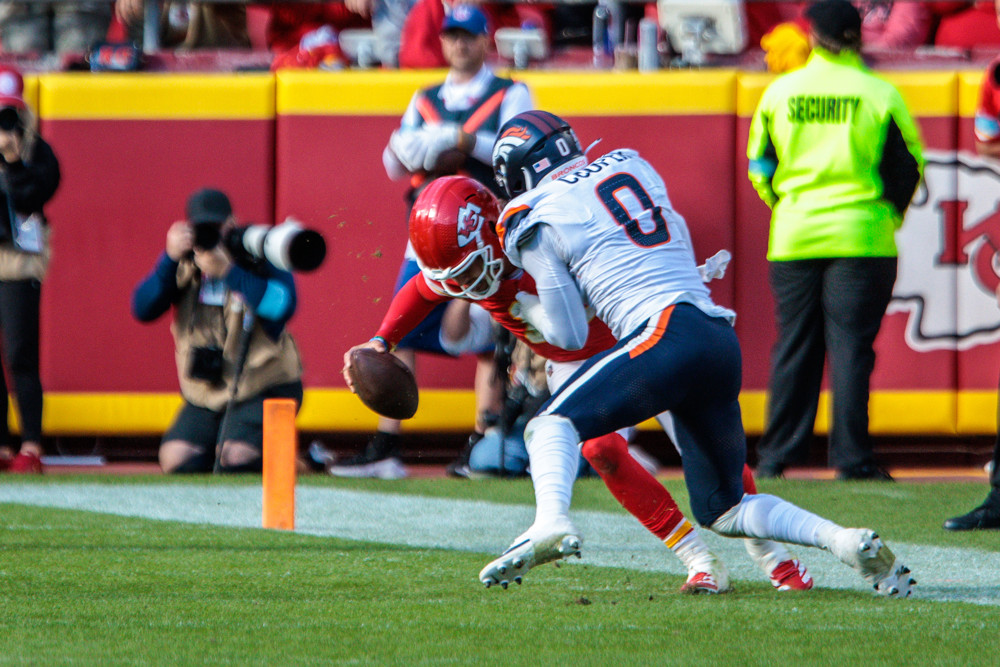
A year ago, it looked like the Denver Broncos couldn’t create pressure on the opposing quarterback without blitzing, as they didn’t have a player who provided a high-end pass-rushing presence.
Only two players tallied more than five sacks that season — Jonathon Cooper and Nik Bonitto — with the latter being relegated to a rotational role, due to being a major liability in the run game. Baron Browning, seemingly the roster’s best hope at developing a star pass-rusher, had another injury-plagued season that arrested his development, as he was able to play in just five games.
12 months later, the outlook for the Denver Broncos pass rush couldn’t be more different.
They now have one of the league’s most potent four-man rushes, and one of the league’s best pass-rushing trios, with Bonitto, Cooper and Zach Allen resulting in the most productive pass rush in Denver Broncos franchise history.
63 sacks — most in the NFL and most in franchise history. 😤
— Denver Broncos (@Broncos) January 27, 2025
Every sack from our record-breaking year: pic.twitter.com/Ay8FYvpo0Y
Bonitto exemplified the turnaround of Denver’s pass rush. After being a bit player in 2023, he now appears to be an elite pass rusher in the making, earning a first-team All-Pro nod this year. Bonitto finished with 13.5 sacks, which is good for third-most in the NFL, and he finished 15th among edge rushers in ESPN’s pass-rush win rate metric, winning 17% of his pass-rush snaps.
Nik Bonitto embarrassed this offensive tackle with the ghost rush. pic.twitter.com/yJlb5MTNub
— Frankie Abbott (@FrankiesFilm) January 6, 2025
If the soon-to-be fourth-year pass rusher remains on his current developmental trajectory, he’ll find himself at the forefront of the Defensive Player of the Year conversation in 2025. Locking him up long-term should be one of the top priorities of the offseason.
Broncos OLB Nik Bonitto is your NFL DPOY. pic.twitter.com/dFFXixX4LM
— Strez (@Its_Strez) December 16, 2024
Cooper didn’t take any major strides in his development, but he turned in another strong season and was rewarded with a contract extension. He remains the best run defender on the edge for the Broncos, and this season he finally crossed the double-digit sack threshold, making both him and Bonitto the first Denver Broncos to tally 10 or more sacks in a single season since Von Miller and Bradley Chubb both accomplished the feat in 2018.
Jonathon Cooper and Zach Allen played their hearts out in the second half and OT. pic.twitter.com/iPjVL5Caaz
— Frankie Abbott (@FrankiesFilm) December 29, 2024
The third head in the Broncos’ pass-rushing King Ghidorah, Zach Allen, continued his ascent toward superstardom, alongside Nik Bonitto. In a league loaded to the gills with awesome defensive line talent, Allen was named first-team All-Pro, finished with the third-best pass-rush win rate at his position, the third-most sacks at his position, and the second-most pressures at his position.
Re-signing Allen might be the only offseason action that takes priority over Bonitto.
Denver’s pass-rush boom is a lot bigger than just those three critical cogs though.
Malcolm Roach and DJ Jones just had the best pass-rushing season of their respective careers, Jonah Ellis looks like a draft hit, and Dondrea Tillman was a valuable UFL find.
Plus, outside of Roach and Jones, all of the pieces will return in 2025. As a result, the future of the pass rush looks wonderfully bright, even though some minor reloads might need to happen this summer.
Bo Nix
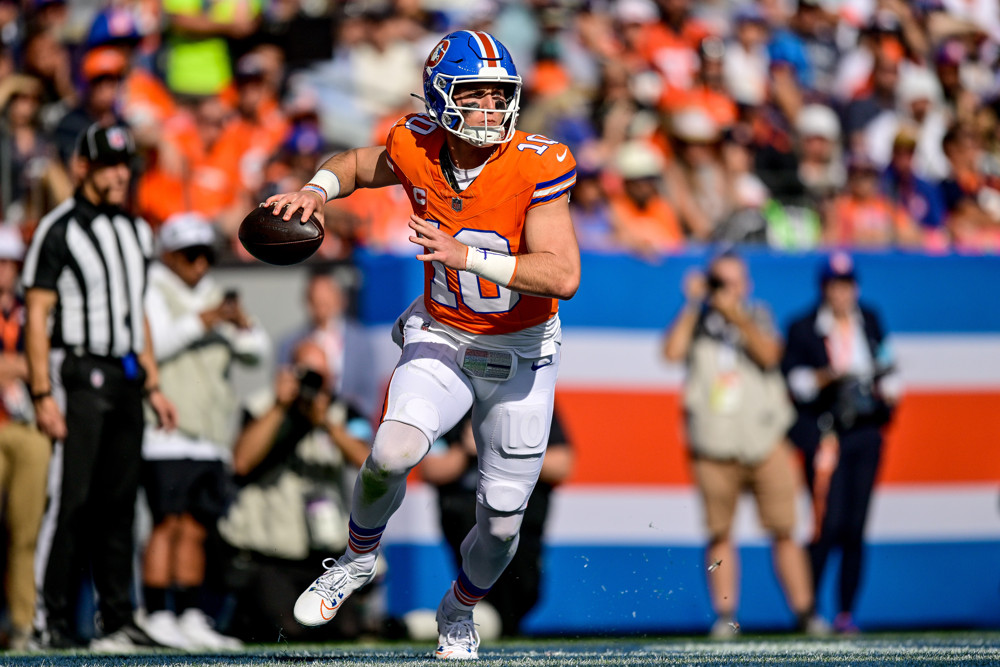
Generally speaking, rookies wouldn’t be included on the year-end stock report. They’re a fresh IPO, and therefore, their stock price is just now getting set, as opposed to a rapid rise from where it was a year ago.
Nonetheless, Bo Nix is a worthy exception to the rule. In part because he was considered a draft farce and horrendous first-round pick, only to prove national consensus wrong; and partly because he was the singular figure who most defined the Denver Broncos 2024 campaign.
Bo Nix touching the clouds. pic.twitter.com/4FuglmutJu
— Ian Rapoport (@RapSheet) December 28, 2024
The Broncos have been looking for a homegrown prospect as promising as Bo Nix since at least Jay Cutler, and, arguably, since John Elway.
His rookie campaign started brutally, with rookie performances against the Seattle Seahawks and Pittsburgh Steelers that were statistically comparable to Josh Rosen’s historically inept first season. Thankfully, from that point on, Bo Nix played like a middle-of-the-pack starting quarterback, which is a raging success for a rookie quarterback.
From Week 3 on, Nix generated .137 EPA per dropback and a 47.4% success rate, ranking 17th and 18th, respectively, among 34 qualifying quarterbacks. Ultimately, he ended the season with 29 passing touchdowns (the second-most ever by a rookie) and 34 total touchdowns (the third-most ever by a rookie).
Nix’s growth was more than just statistical production though. As the season wore on, you could see the game slow down for Nix, as his reads became faster and more deliberate, and his feet became much calmer. His accuracy and command of the offense both greatly improved as a result.
The endzone view of the Bo Nix to Marvin Mims 93-yard TD was everything I hoped it'd be. pic.twitter.com/NtG8SSXKWA
— Frankie Abbott (@FrankiesFilm) December 3, 2024
Finally, Nix cemented his spot on this list by proving he wasn’t the prospect the draft cognoscenti made him out to be last offseason. His arm strength and mobility are both a few tiers better than anticipated, making it much easier to project him developing into one of the league’s best quarterbacks.
Some of my favorite throws from Bo Nix's rookie season. pic.twitter.com/4q1wlIttXJ
— Robby (@Robby_NFL) January 8, 2025
He will have to keep building though. Nix might not hold much stylistic similarity to Kenny Pickett or Mac Jones or Mitch Trubisky, but he risks falling down the same path they all did if he’s unable to adapt to the counterpunch defenses are sure to throw at him next year.
It’s easy to view Nix as a ‘made man’ after such a strong debut, but rushing to that assumption is how you wind up like Joe Pesci. The phone call sounds great, and the expectation should be that Nix takes the next step in 2025, but don’t assume that developmental leap is a done deal.
Marvin Mims
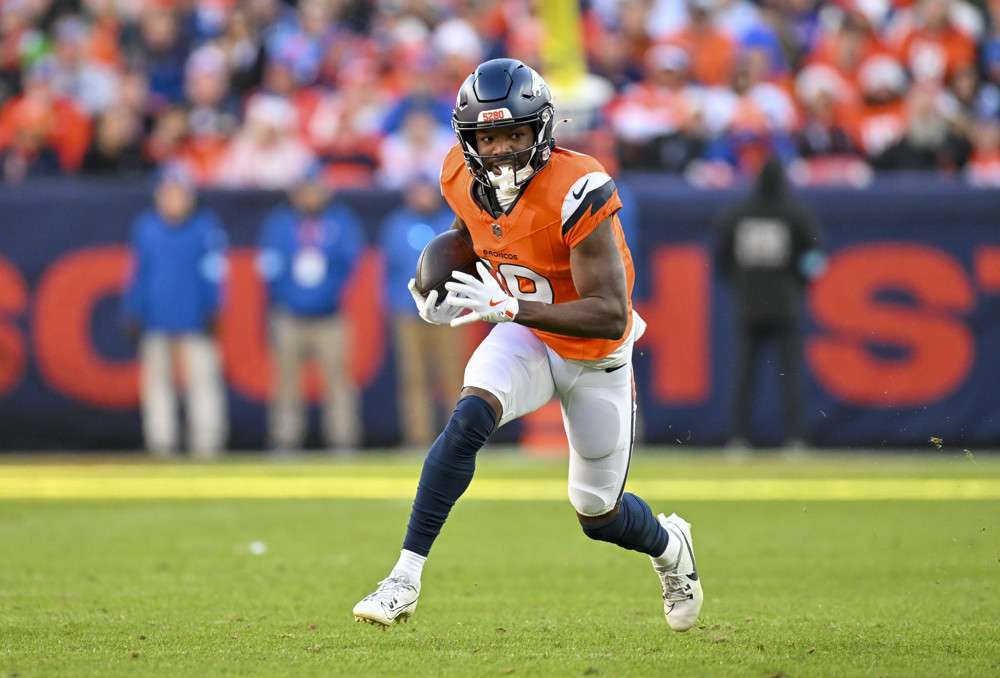
At midseason, Marvin Mims was a regular feature in the ‘Stock Down’ portion of the article, but his strong close to the season completely reversed the narrative surrounding the former Oklahoma Sooner.
Now, as we look toward the 2025 season, Mims is clearly a key element of the offense moving forward.
Following the trade of Jeudy, Mims was always going to need to step up to fill the void, but it took a while to get there. Through the eight weeks prior to the team’s bye week, Mims totaled six catches for 52 yards and one carry for 17 yards. As the bye week neared, Mims’ snap count and offensive role dwindled.
But then, coming out of the bye week, Mims’ Broncos career was sparked back to life. Rather than using him primarily as a deep threat and vertical field-stretcher, Sean Payton focused on getting him the ball in space and letting him go to work.
Marvin Mims being deployed in new and creative ways has been a huge boost to the Broncos offense down the stretch on the regular season. He’s grabbed my attention. pic.twitter.com/tss3EeL4iE
— Matt Harmon (@MattHarmon_BYB) January 7, 2025
Mims’ Average Depth of Target (ADOT) plummeted from 17.0 before the bye week to 4.2 after it, and that’s with the Cleveland game inflating the post-bye numbers. In turn, Mims’ production and stock skyrocketed. Over the regular season’s final nine games, Mims tallied 33 catches for 451 yards and six touchdowns. That means he had as many post-bye touchdowns as he had pre-bye receptions.
Marvin Mims pic.twitter.com/zhOBCgOeKf
— Ian Hartitz (@Ihartitz) January 23, 2025
It should be noted that this is a double-edged sword though. While Mims’ turnaround was tremendous, it also highlighted the fact that he might only ever be a gadget player at the NFL level. He’ll look to dispell that notion — while maintaining the after-the-catch dominance — in 2025.
DENVER BRONCOS STOCK DOWN
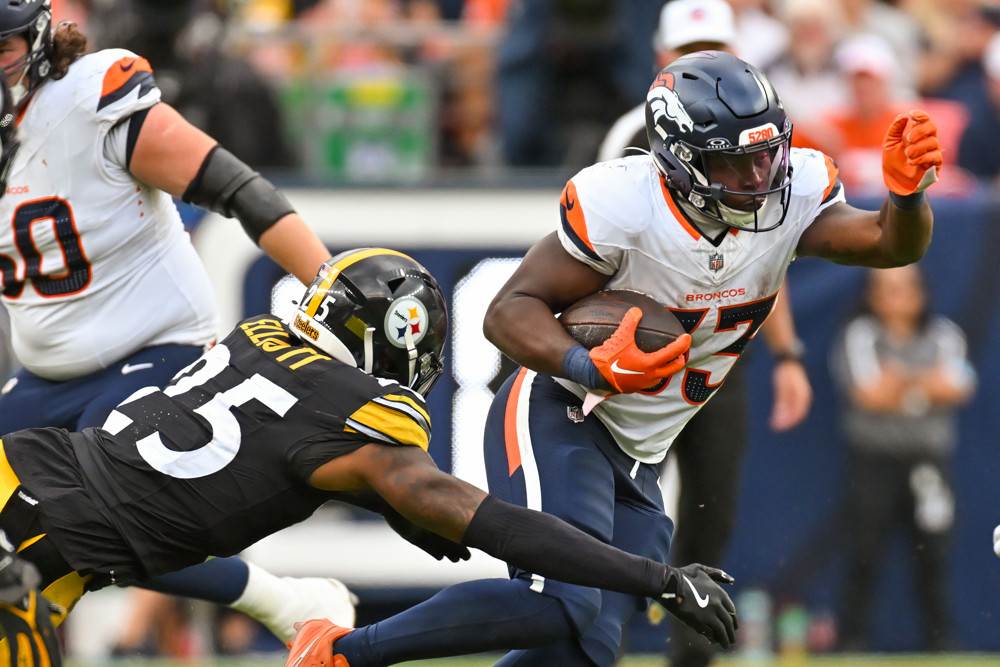
The Entire Denver Broncos Running Back Room
No aspect of the Denver Broncos’ 2025 season was more disappointing than the run game, and that is almost entirely the fault of the Broncos’ running back room.
Per NFL Pro, Denver ranked 11th in rushing success rate (RSR) and 11th in yards before contact (YBCo) per attempt this season, but they ranked 24th in rushing yards over expectation (RYOE) per attempt and 30th in yards after contact (YACo) per attempt. That disparity evidences quality play from the line and an effective scheme sunken by a terrible running back group.
Look no further than the fact that up until the end of the season, fans were pining over two fairly random undrafted free agents — a player who had never touched the ball in a regular season NFL game and failed to register even 3.5 yards per carry in any of his preseason appearances against third-stringers (Blake Watson), and another player who had just 12 carries to his name (Tyler Badie). Badie at least had shown some more promise than Watson, but even then, that projected upside was almost entirely staked on his one 43-yard carry, which matched the production of his other 11 career carries combined.
That duo provided marginally more hope than the phrase “starting quarterback Dorian Thompson-Robinson”, and yet still, fans prayed for these perceived saviors for months.
How’d Denver get here?
The Broncos bet big on Javonte Williams returning to rookie form that he was another year removed from a devastating knee injury, with only a fifth-round rookie and second-year undrafted free-agent to bolster the room, and it proved to be a costly gamble.
Not to beat a dead horse, but how many more ineffective screen passes to Javonte Williams do we need to see?
— Matt Schubert (@MattDSchubert) December 15, 2024
Not only did Williams fail to bounce back, he fell off, performing like one of the worst running backs in the league for much of 2024. Among 41 qualifying running backs, the fourth-year back ranked 40th in RYOE per attempt and 38th in expected points added (EPA) per rush. Perhaps most damning of all though, considering that physicality was the foundation of Williams’ game when he was at the height of his powers, is the fact that the one-time Tar Heel ranked 41st in YACo per attempt.
The failings weren’t isolated there though. Despite Williams’ painful ineptitude in the backfield, he wasn’t unseated as the team’s starting running back until the Week 14 matchup with the Indianapolis Colts.
Now, that was partially due to some stubbornness from Sean Payton, but again, the other backfield options offered very little hope. Jaleel McLaughlin ranked 34th in RYOE per attempt, 17th in EPA per rush and 33rd in YACo per attempt, while being a complete non-factor in pass protection and a negative as a receiver (worst EPA per target of any Bronco with at least 15 targets this season), and Audric Estime demonstrated so little value that he was made a healthy scratch in favor of Badie ahead of the Broncos’ playoff game.
With the team looking to upgrade its roster ahead of the 2025 season, they should attempt to add as many new faces as possible to the running back room, as none of Denver’s three primary backs last season seemed to be worthy of a top-two spot in any backfield rotation.
P.J. Locke
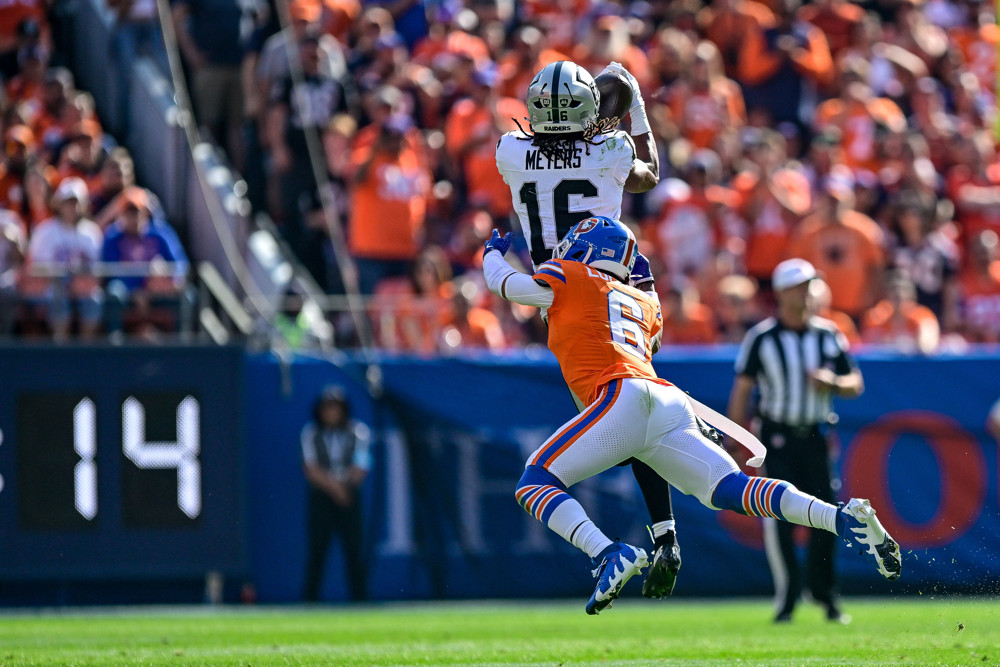
P.J. Locke earned a chance to be one of the Denver Broncos’ starting safeties after multiple seasons of strong relief work. Following his 2024 debut as one of the team’s top-two safeties, it’s clear he’s best used as a special teams ace and versatile third safety instead, a la his 2023 and 2022 roles.
That said, with Locke’s contract providing a starter-level cap hit of $5.19 million, his roster spot is up in the air. The Broncos would stand to save $4.19 million by cutting Locke, and it’s one of their only avenues of freeing up a large sum.
The only other players on Denver’s roster who would free up at least $4 million with a cut are Courtland Sutton, John Franklin-Myers, Nik Bonitto, and Alex Singleton. It’s hard to imagine the Broncos parting ways with Sutton, Franklin-Myers or Bonitto for a variety of reasons, and Singleton is one of the few players on the roster in more danger than Locke.
Dialing up the heat even further on Locke’s seat is the fact that it’s a very strong safety class in free agency. Justin Reid, Jevon Holland, Xavier Woods, Trevon Moehrig, Camryn Bynum, Talanoa Hufanga, Andre Cisco and Justin Simmons are all starting safeties with contracts expiring this offseason.
#Broncos linebackers (and PJ Locke) second half of the season pic.twitter.com/hpZ3qsFtea
— Nick Kendell 🏔 (@NickKendellMHH) January 12, 2025
If Denver cuts bait with Locke, they could view the $4.19 million in savings as a discount on whoever they chase in free agency. The veteran safety market is also generally pretty cheap to buy into, as demonstrated by the Broncos locking up Brandon Jones for just $20 million over three years.
Alex Singleton
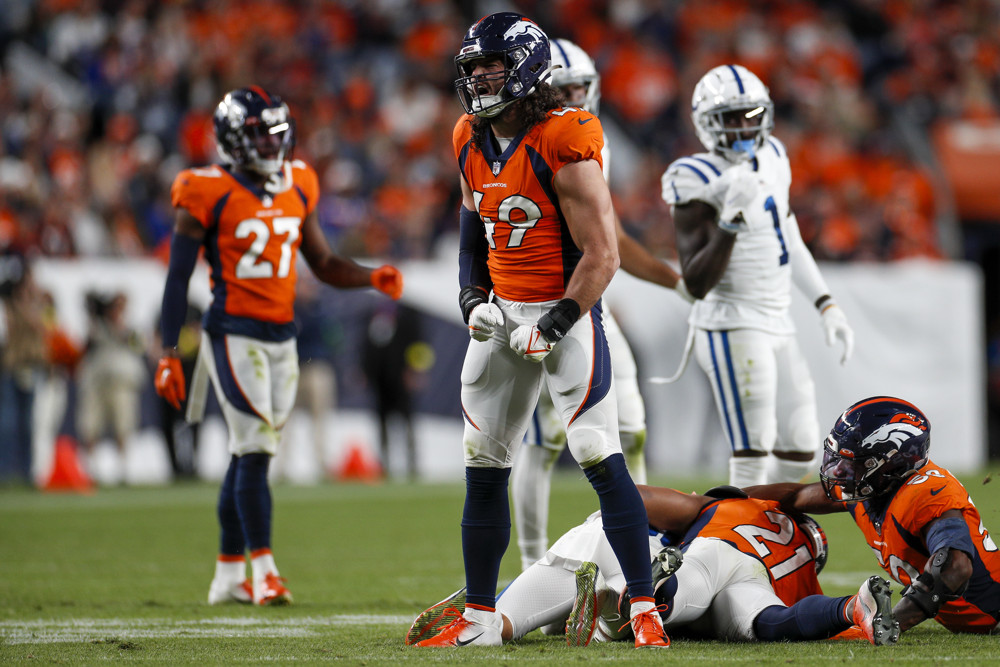
Part of Alex Singleton’s inclusion here is the fact that it would feel unfair to place Cody Barton or Justin Strnad here. Sure, Barton and Strnad struggled a great deal over the final month of the season, but both still dramatically outperformed their preseason expectations.
In fact, they performed well enough that Singleton will almost certainly be cut before the start of free agency.
Singleton will turn 32 next season, is coming off a torn ACL, and is one of the league’s least reliable tacklers and most exploitable coverage players. He’s also the player with the best “dead cap:cap savings” ratio on the Broncos roster outside Nik Bonitto, and it’s safe to say they won’t be looking to cut Bonitto.
Cutting Singleton will save the Broncos over $5 million, which is all would cost to find a major upgrade at the very position Singleton plays.
Josh Reynolds
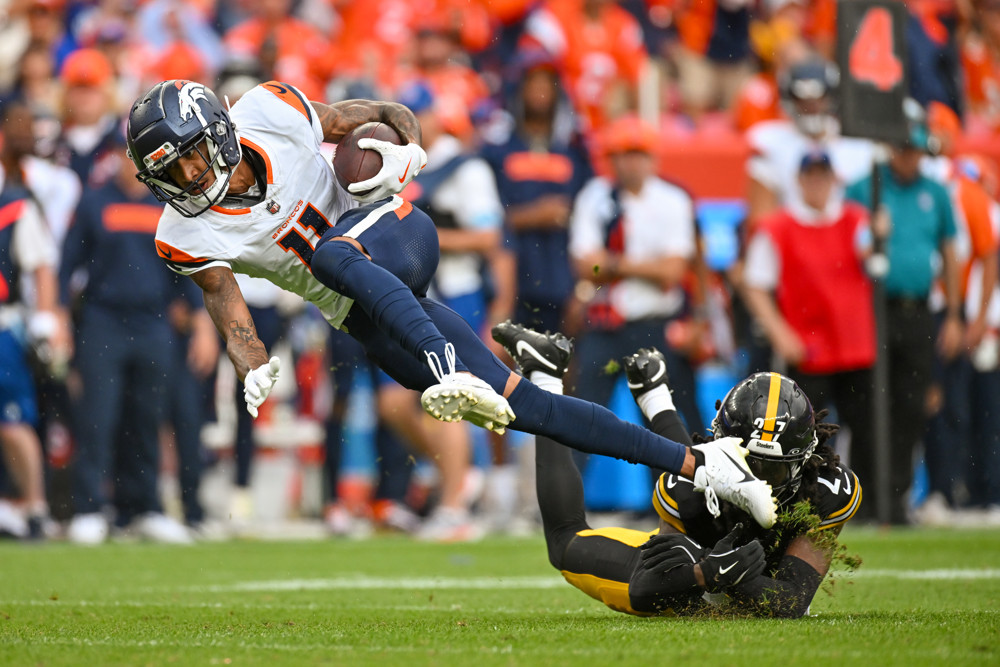
Josh Reynolds was signed to be Sean Payton’s oversized slot option moving forward.
The remarkable emergence of Devaughn Vele, paired with an off-field incident that resulted in a high-speed car chase and Reynolds ultimately being shot in the back of the head, ultimately resulted in the Broncos deciding to move on from the former Lion before he was even two-thirds done with the first year on his multi-year deal.
That steep plummet from grace lands Reynolds here, even though his path here was an unfortunate one.
